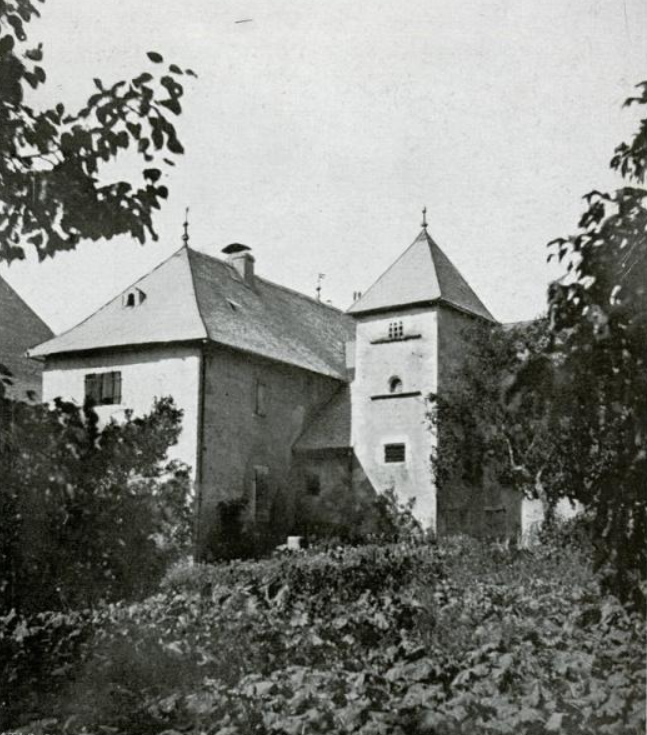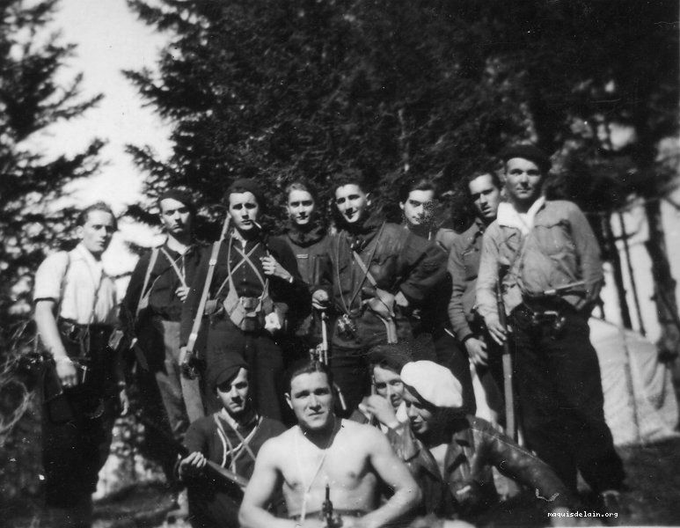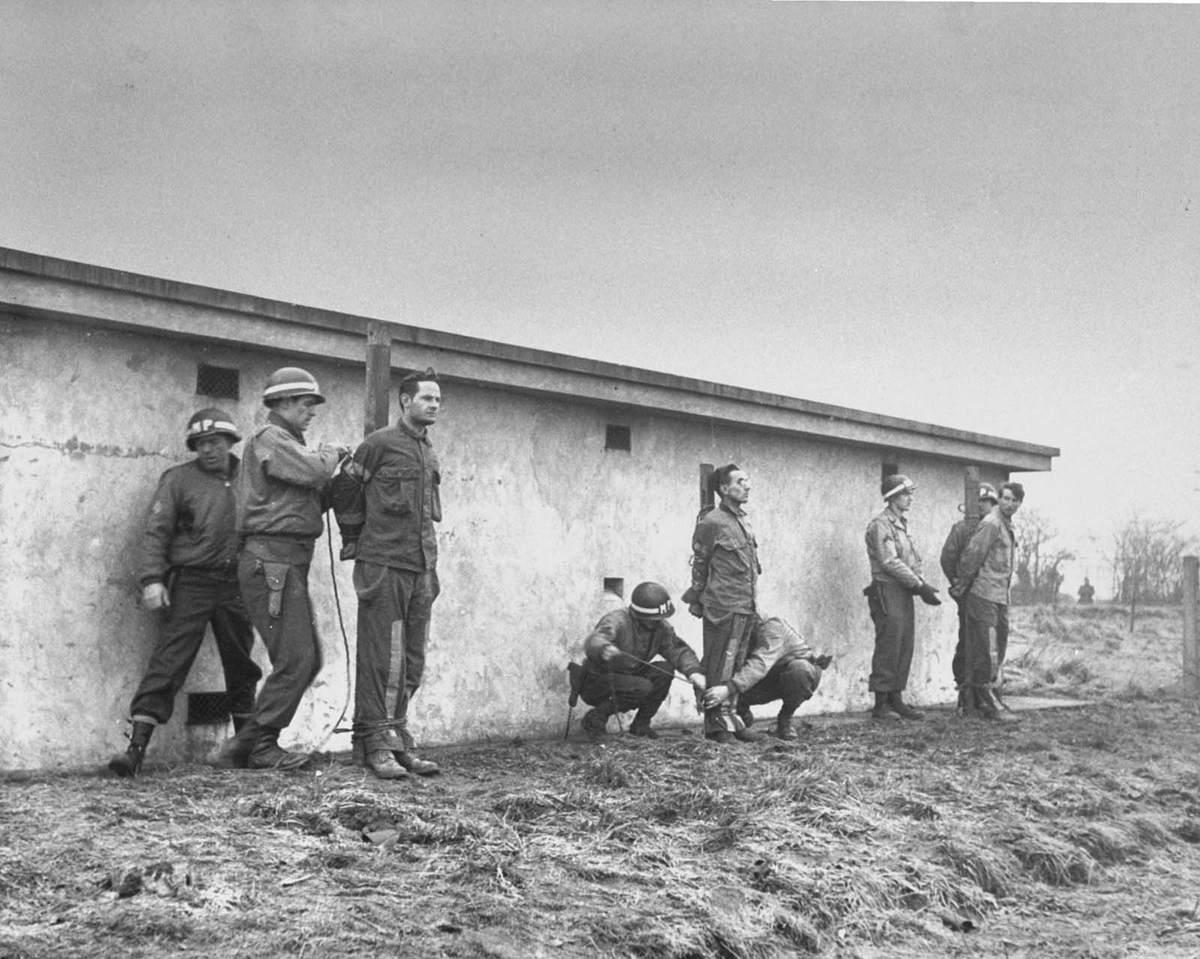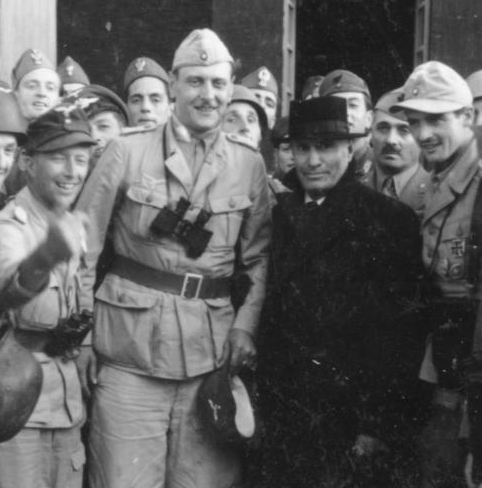
Created by Yannis Kadari (Cadet Publishing CEO), Vanguard is a group of historians and authors who are passionate about WW2 history.
2 subscribers
How to get URL link on X (Twitter) App


 Many of the young men present had refused to join the obligatory work service (STO) that saw thousands of young French men sent to work in German factories. Instead, they took to the hills, either hiding out in farms or joining maquis resistance groups. 2/6
Many of the young men present had refused to join the obligatory work service (STO) that saw thousands of young French men sent to work in German factories. Instead, they took to the hills, either hiding out in farms or joining maquis resistance groups. 2/6 

 The three German infiltrators, Unteroffizier Manfred Pernass, Oberfähnrich Günther Billing, and Gefreiter Wilhelm Schmidt had been part of Operation Greif under the leadership of Otto Skorzeny, the man who had led the daring mission to rescue Mussolini in September 1943.
The three German infiltrators, Unteroffizier Manfred Pernass, Oberfähnrich Günther Billing, and Gefreiter Wilhelm Schmidt had been part of Operation Greif under the leadership of Otto Skorzeny, the man who had led the daring mission to rescue Mussolini in September 1943. 

 One of the best known photos is that taken by Robert Capa as American forces liberated Chartres in mid August 1944.
One of the best known photos is that taken by Robert Capa as American forces liberated Chartres in mid August 1944.


 Lucie was born into a working class family in Paris in June 1912. Her father, Louis Bernard, saw action in the Great War and was badly wounded in 1915.
Lucie was born into a working class family in Paris in June 1912. Her father, Louis Bernard, saw action in the Great War and was badly wounded in 1915. 

 The family settled back into life with their now demobbed father who had found a job in a large department store in the city.
The family settled back into life with their now demobbed father who had found a job in a large department store in the city.

 William "Billy" Fiske was born into a wealthy banking family in Chicago on 14 June 1911.
William "Billy" Fiske was born into a wealthy banking family in Chicago on 14 June 1911. 



 Born on 4 March 1923, he lived at 12 Hempfield Road in Littleport, Cambridgeshire with his parents George and Hannah and sister Kathleen.
Born on 4 March 1923, he lived at 12 Hempfield Road in Littleport, Cambridgeshire with his parents George and Hannah and sister Kathleen. 


 Fry was born in New York City on 15 October 1907 and by the age of nine, already showed a humanitarian streak when he held a fund raiser for the American Red Cross during World War One.
Fry was born in New York City on 15 October 1907 and by the age of nine, already showed a humanitarian streak when he held a fund raiser for the American Red Cross during World War One. 


 A wave of arrests in October 1941 in the non-occupied zone saw many SOE agents fall into the hands of the Vichy police. Among them was Georges Bégué, the first SOE F Section agent to be parachuted into France in May 1941. 2/8
A wave of arrests in October 1941 in the non-occupied zone saw many SOE agents fall into the hands of the Vichy police. Among them was Georges Bégué, the first SOE F Section agent to be parachuted into France in May 1941. 2/8 


 Göring is in Paris to see what art he can loot, as he has already done in Amsterdam.
Göring is in Paris to see what art he can loot, as he has already done in Amsterdam. 

 Present at the clearing is American journalist and writer William L. Shirer. He types down what he sees. He is seen here (left) under a tree with the building that housed the carriage in the background.
Present at the clearing is American journalist and writer William L. Shirer. He types down what he sees. He is seen here (left) under a tree with the building that housed the carriage in the background. 

 The Tirailleurs put up a staunch fight, holding up the Germans for a day. On the 20th, the fight is over and the French officers tell their men to lay down their arms. The Germans are furious as Lyon had been declared an open city and they were not expecting resistance.
The Tirailleurs put up a staunch fight, holding up the Germans for a day. On the 20th, the fight is over and the French officers tell their men to lay down their arms. The Germans are furious as Lyon had been declared an open city and they were not expecting resistance. 

 BBC Radio Londres had begun using the message system back in September 1941 when SOE radio operator Georges Bégué sent back the first message of this type.
BBC Radio Londres had begun using the message system back in September 1941 when SOE radio operator Georges Bégué sent back the first message of this type. 


 99 prisoners of war are lined up against a barn wall a little further down the road. In the meadow facing them are machine guns.
99 prisoners of war are lined up against a barn wall a little further down the road. In the meadow facing them are machine guns. 


 Pradier decided not only to become a collaborator, but aged 19 became a policeman for the SS Sipo-SD in the Dordogne, infilitrating maquis resistance groups and then denouncing them, as well as finding Jewish people that were hiding out in the countryside.
Pradier decided not only to become a collaborator, but aged 19 became a policeman for the SS Sipo-SD in the Dordogne, infilitrating maquis resistance groups and then denouncing them, as well as finding Jewish people that were hiding out in the countryside. 

 When André finished his shift at the end of the afternoon, he waited for the tram to arrive to take him back to Oradour.
When André finished his shift at the end of the afternoon, he waited for the tram to arrive to take him back to Oradour.

 When France fell in June 1940, the Channel Islands were demilitarised, deemed as having no strategic importance. Some people chose to take the offer of evacuation, but on Sark, Sibyl Hathaway and her husband held a public meeting to state that they would remain, and many local people decided to do the same.
When France fell in June 1940, the Channel Islands were demilitarised, deemed as having no strategic importance. Some people chose to take the offer of evacuation, but on Sark, Sibyl Hathaway and her husband held a public meeting to state that they would remain, and many local people decided to do the same.

 At 2 p.m., the French column reaches the river Saalach, the last barrier before Berchtesgaden which is now only 15 kilometres away.
At 2 p.m., the French column reaches the river Saalach, the last barrier before Berchtesgaden which is now only 15 kilometres away. 

 Masur was taken to Hartzwalde some fifty miles north of Berlin and not far from the women's concentration camp of Ravensbrück.
Masur was taken to Hartzwalde some fifty miles north of Berlin and not far from the women's concentration camp of Ravensbrück. 


 The German garrisons on the Channel Islands had been cut off since the end of the Battle of Normandy and supplies, as well as morale, were low. In December, four German paratroopers and a sailor, held in the Granville POW camp had made a daring escape to Jersey by taking a landing craft from the harbour. 2/7
The German garrisons on the Channel Islands had been cut off since the end of the Battle of Normandy and supplies, as well as morale, were low. In December, four German paratroopers and a sailor, held in the Granville POW camp had made a daring escape to Jersey by taking a landing craft from the harbour. 2/7

 PFC Ira Hamilton Hayes was born in 1923 into the Akimel O'odham (Pima) Native American people in Arizona. He enlisted into the USMC Reserve in August 1942 and went on to see combat on the Solomon Island of Bougainville before taking part in the bloody landings on Iwo Jima on 19 February 1945. 2/10
PFC Ira Hamilton Hayes was born in 1923 into the Akimel O'odham (Pima) Native American people in Arizona. He enlisted into the USMC Reserve in August 1942 and went on to see combat on the Solomon Island of Bougainville before taking part in the bloody landings on Iwo Jima on 19 February 1945. 2/10